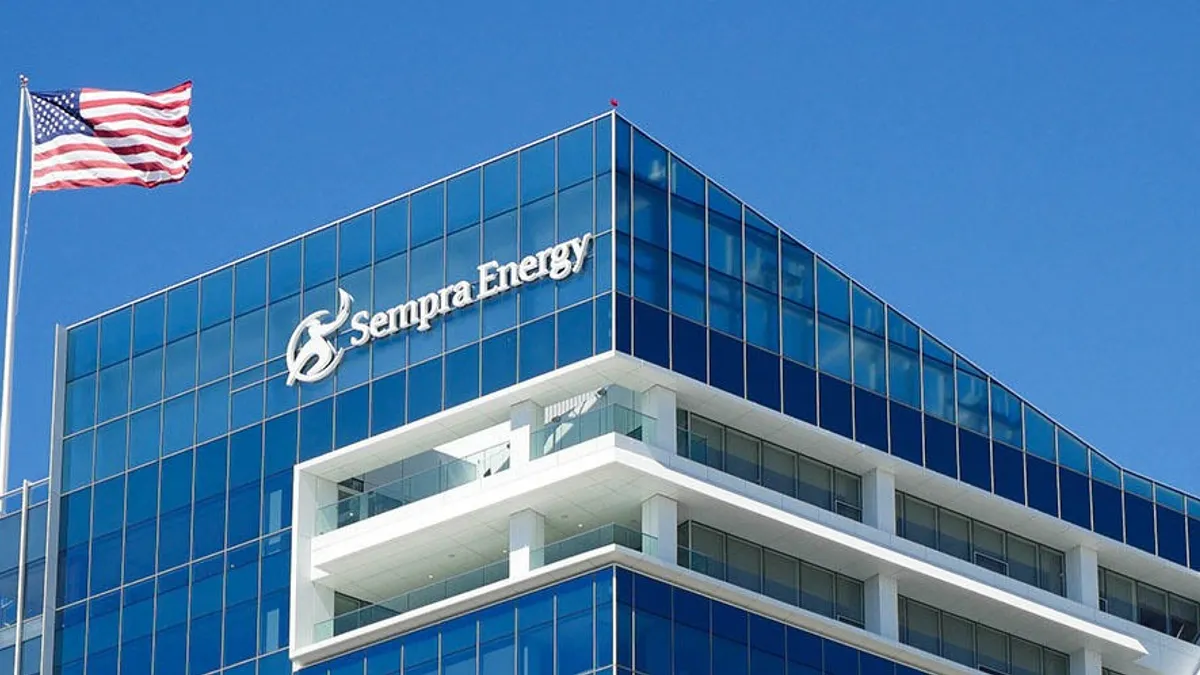Dive Brief:
-
Sempra Energy subsidiaries Southern California Gas (SoCalGas) and San Diego Gas & Electric (SDG&E) plan to launch California's first hydrogen blending demonstration program as a first step toward creating a hydrogen injection standard for the state.
-
The first proposed project would begin with a 1% hydrogen blend in an isolated section of primarily polyethylene plastic distribution system, the company said, and eventually could increase to as much as 20% hydrogen. The location of the project will be selected in early 2021, and the utilities plan to implement more such blending demonstrations in their service territories.
- Adding hydrogen to California's resource mix could allow the state to build a much more efficient power system, and reduce the need to overbuild solar and battery storage capacity, according to Jussi Heikkinen, director of growth and development at Area Americas under Wärtsilä Energy Business. But Sasan Saadat, a research and policy analyst with Earthjustice, questioned how much the proposed project would achieve in terms of decarbonization.
Dive Insight:
Blending hydrogen with natural gas is part of SDG&E and SoCalGas' strategies to decarbonize their natural gas systems, according to Sempra — the utilities envision using excess renewable energy to produce green hydrogen, which can then be injected into the natural gas grid.
The utilities outlined the planned blending demonstration program in a joint filing with the California Public Utilities Commission (CPUC), along with Pacific Gas & Electric (PG&E) and Southwest Gas. Last November, CPUC Commissioner Clifford Rechtschaffen asked the utilities to submit an application proposing, among other things, a first stab at an injection standard for renewable hydrogen. But the utilities were unable to propose a standard because of the lack of knowledge and testing limitations — issues that they hope will be addressed by the blending demonstration project, if it is approved by the agency.
In a separate motion filed with the commission, SoCalGas and SDG&E requested permission to set up a memorandum account to track the costs of the program, as well as the development of a hydrogen injection standard.
SoCalGas and SDG&E briefed regulators on the safety precautions they intend to take with the program, including ensuring that the blend is compatible with behind-the-meter appliances, implementing leak surveys, and creating a specific customer protocol and emergency response for hydrogen. The utilities intend to implement more demonstrations in the future using mixed plastic and steel natural gas equipment, as well as an isolated steel pipeline.
The proposed blending projects are an important first step in the right direction, Heikkinen said — but to reach a high level of decarbonization, it is necessary to blend fairly high shares of hydrogen into natural gas because of its lower density. In a 25% hydrogen, 75% natural gas blend by volume, for example, less than 10% of the resulting energy comes from hydrogen, he explained.
"When we start blending, then we should go for higher blends as fast as possible. When you start to go beyond 50%, then you start to make a difference," Heikkinen added.
And while producing hydrogen is fairly straightforward, a key issue the sector will need to solve is figuring out the best way to store it, according to Heikkinen.
Testing of the kind proposed by SoCalGas and SDG&E is important because it provides the industry with data on the operational limits, technical capabilities and safety requirements of blending hydrogen, Laura Nelson, executive director of the Green Hydrogen Coalition, said, adding that the proposal is an important and practical step toward establishing a future injection standard.
In addition, the pilots would also provide data and information around what upgrades need to be made to existing natural gas infrastructure to equip it to carry hydrogen — and the associated costs.
"Those really are valuable resources and so if we can repurpose them, we can use them for both transporting this green, clean molecule … but we can also use them for storing vast quantities of green hydrogen," Nelson said.
Small-scale demonstration projects like the one proposed by the Sempra utilities aren't necessarily a bad idea, Earthjustice's Saadat acknowledged — but even a 20% hydrogen blend will only correspond to 7% hydrogen by energy content, which wouldn't do much for the climate, Saadat said.
"The research we have so far in California tells us that optimistically, up to 20% by volume of the gas grid could maybe handle hydrogen, but that doesn't even tell us how it will respond when it's handled in end-use applications," Saadat added.
And while these are some of the questions the proposed demonstration project is trying to better understand, "the idea that we'll just be able to one for one switch the fuel from natural gas to hydrogen and continue as business as usual… is, I think, far-fetched," he added.















